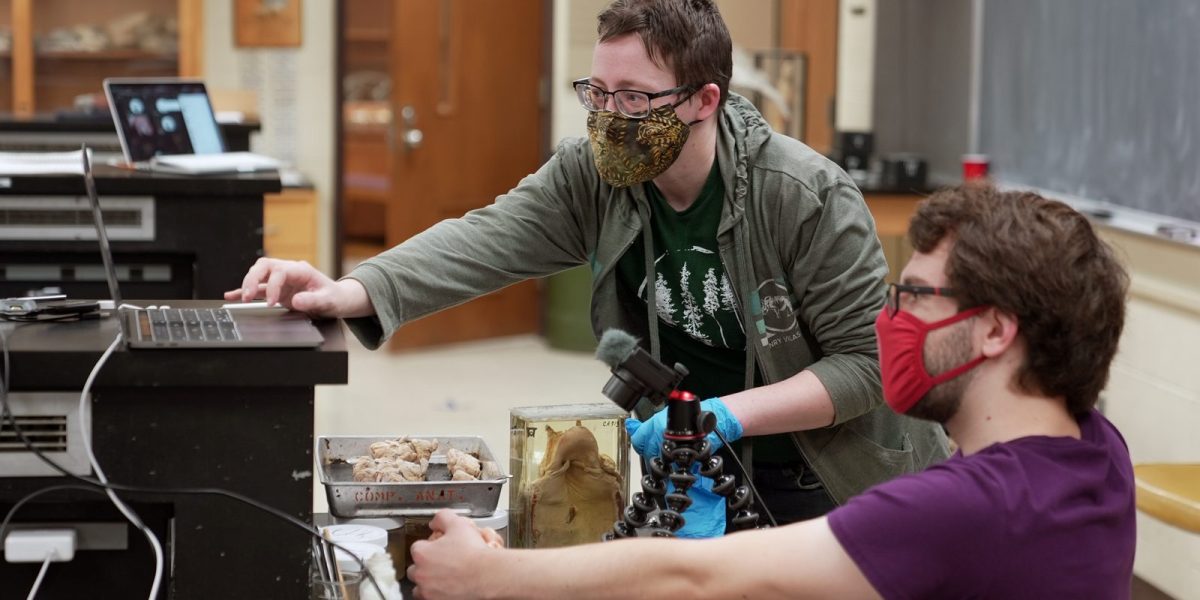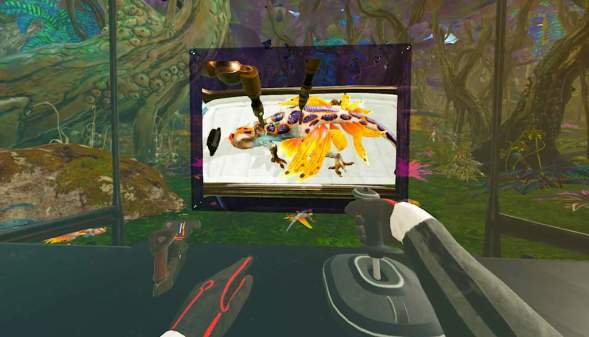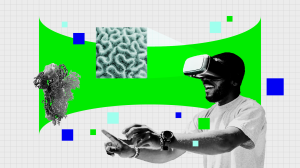Anatomy professor builds video library for ‘very tactile’ course

Knowing that the fall semester at University of Wisconsin, Madison would be unpredictable and unusual as the institution continued to navigate the COVID-19 pandemic, comparative anatomy professor Scott Hartman made sure he was prepared for any teaching scenario by creating video lessons for his students, the university announced this month.
Comparative Anatomy of the Vertebrates, the class that Hartman taught this past semester, relies on hands-on learning, with students handling the skeletons of cats and foxes, exploring the muscles of pigeons and dissecting the brains of sharks to learn about anatomy, Hartman said in a press release. “This is a very tactile course,” he said. And so to ensure students could continue learning in his class, whether it be online or in-person, Hartman compiled an online library of videos of the hands-on lessons.
“Anatomy is not a subject that is fully conveyed by static 2D images,” Hartman said in the press release. “We needed to make sure the students had as many avenues to see the real thing as we possibly could.”
So with the help of two graduate students, Jacki Whisenant studying entomology, and Aaron Kufner studying geoscience at UW Madison, Hartman filmed all of his lessons for the class to be an extra resource for students, should in-person learning resume or as a way to keep students learning in an online-only scenario.
In mid-September, when UW Madison moved all undergraduate classes back to an online-only format for two weeks to prevent the spread of COVID-19, Hartman used his anatomy video library and livestreamed labs, which showed things like 360-degree views of the bones of an alligator skull or a walkthrough of one of dissecting a sheep eyeball, to make the class fully remote.
And even when in-person classes were allowed to resume, Hartman said his videos were still a critical tool for students.
“When the quarantine was done, we never had everyone back in class at once,” Hartman said. “We still had students who needed to take the labs online.”
Students who could take classes in person also benefited from the online resources, Hartman said, by giving the them extra practice and further explanation of class lessons.
Moving hands-on classes to an online format has also been critical for other institutions to keep students engaged with their classes as they attend classes remotely. Rutgers University, for example, designed virtual reality environments for its students psychology students to practice conducting therapy sessions, and California Community Colleges similarly launched virtual science labs for its students.




